Australia's History 1788 - 1931 Viewed Via Our Coins
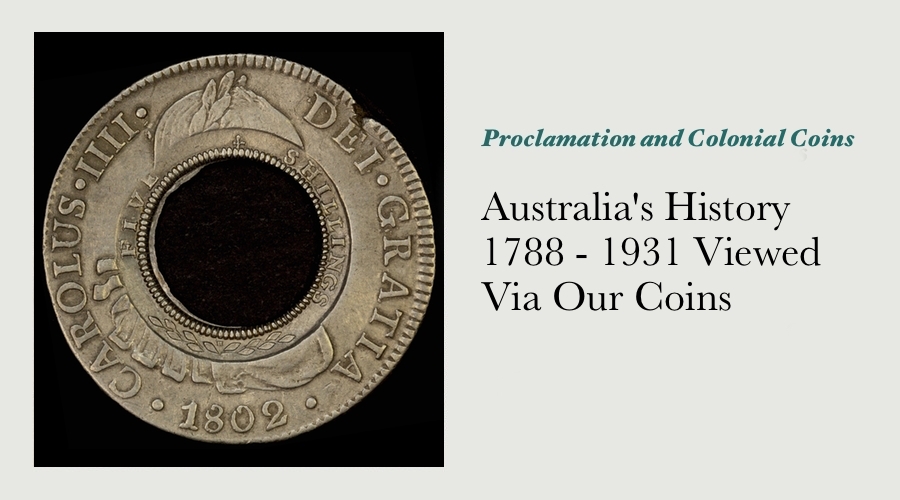
Economists state that money has three basic functions: as a medium of exchange; a measure of value and as a store of value. To quote the famed economist Adam Smith: “Money is a commodity or token that everyone will accept in exchange for the things they have to sell.”
A technical discussion of the history of coinage and paper money in Australia then could focus on the various coins; tokens and slips of paper that have been exchanged in trade since settlement; the range of items seen by Australians as being a solid store of value and the various items that have been used to measure value in Australian business over the years.
A broader exploration of these issues allows us to explore Australian social & cultural history in a truly unique way.
Settlement to 1825: the Coinage of Colonial Australia
.jpg)
British officials presiding over the colony’s conception had deemed that it was to become entirely self-sufficient – quickly. So strong was the desire for self-sufficiency that a specific directive was made that the colonists were not to trade with others in the region. Keeping this in mind, the Home Office declared that a domestic currency would not be necessary. In a letter to a friend in 1794, one Thomas Muir wrote: “In a country like this, where money is really of no value, and rum everything, you must perceive the necessity of my having a supply by every vesseli.”
Thus the first settlers promptly reverted to the age-old system of bartering, although they occasionally made do with whatever British or foreign coins came to hand. Most of these arrived in the pockets of visiting merchants, and were passed on for their value in weight rather than the generally accepted ‘face’ value. The variety of coins in use reflected the British origin of the settlers, as well as the path they took via Europe and South America to reach Australia. Coins from the major trading powers of the region such as Spain, Portugal, the Netherlands and India were among those in use. As Governor of New South Wales in 1800, Captain Philip Gidley King was faced with the complete absence of even the most basic internal economic system. On 19 November 1800, 132,000 copper pennies arrived in the colony from London. Governor King immediately issued an official proclamation governing their use, and went on to list not only the other coins that could legally circulate within the colony, but also the rates at which they were to be accepted.
There is little doubt that most of these coins were the sole domain of merchants such as Simeon Lord, Robert Campbell and other affluent settlers, and were rarely seen by most colonists. Coinage such as silver rupees also made their way to Australia in the strongboxes of the Anglo-Indian “invalids, speculators and settlersii” seeking a new life after their duty in India had come to an end.
One notable import of coinage can be read in the “Australian” newspaper of 22 December 1825. A Colonel Dumaresq arrived in New South Wales from Mauritius with much of his wealth in the form of rupees. Upon arrival, the beleaguered Colonel found that he had been misinformed as to their legal tender value, and rather than merely pass them on at their bullion value, ingeniously employed a local merchant to sell them. Barnett Levey began accepting rupee deposits and even issuing rupee notes on Dumaresq’s behalf under the name of “Rupee Warehouse”. The venture earned the ire of fellow merchants owing to the healthy profit margin involved, and unable to stand in the face of concerted opposition, the Dumaresq / Levey foray into petty banking faded into obscurity.
1813: The Holey Dollar and the Dump
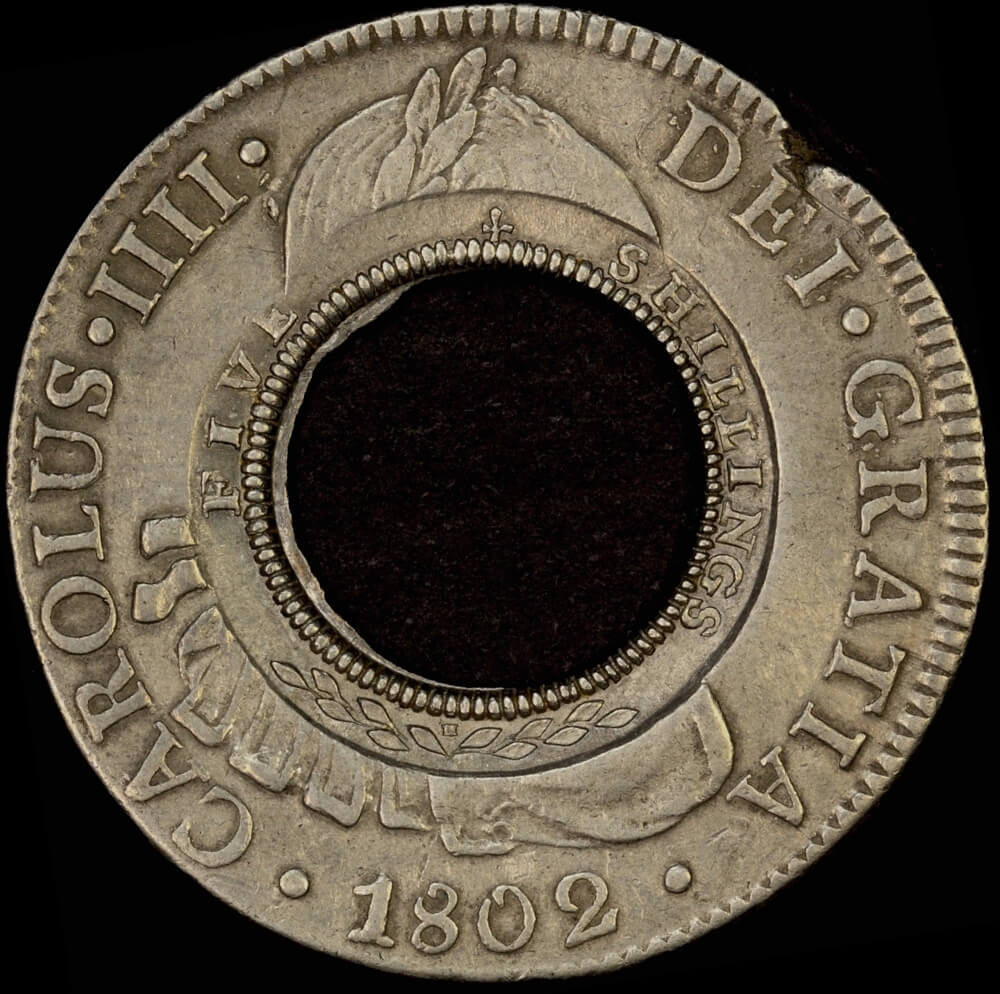
Governor Lachlan Macquarie also encountered the seemingly ageless problem of coinage leaving Australia’s shores with foreign merchants. Apart from the difficulty of retaining currency within the colony, another problem was the lack of small denomination coinage for everyday transactions. Macquarie’s solution, although not completely without precedent, was certainly inventive.
40,000 Spanish colonial silver dollars arrived in the colony on board the Samarang, and Macquarie directed the convicted forger William Henshall to cut out a round section from the centre of each Spanish dollar, ensuring that the coins were of reduced value outside NSW. The centre section of each Spanish dollar was valued at 15 pence in trade and became known the “Dump”. The outer section of the coin was valued at five shillings in trade, and is known as the “Holey Dollar”. As the first coins struck on Australian soil, these incredibly rare coins are of great appeal to collectors, particularly when they have a provenance linked to a figure central to our colonial economy.
The provenance of one such coin is particularly interesting - it can be traced back 162 years, to the extended family of a prominent grazier & merchant that had earlier served as a Captain with the NSW Corps. Current research shows that the coin was originally given to a gardener by a “local dignitary” in Exeter (Northern Tasmania) in 1842. Interestingly, the gardener was part of the extended Kemp family, descended from Anthony Fenn Kemp, an officer in the NSW Corps and a Sydney merchant that had retired to Tasmania. The coin remained in the Kemp family for five generations (136 years), only being sold to a Tasmanian numismatist late in 1978. The coin quickly changed hands several times across Australia and the United States during 1978 and 1979, and was then in a private collection for the past 25 years. That this coin is known to have been given as a gift to a member of the extended family of an officer in the NSW Corps – a man heavily involved in Sydney’s economy & political life at the time the Holey Dollars were produced & used in daily trade, makes it a particularly exciting example to own.
1825 & 1826: The Comprehensive Introduction of Sterling Coinage
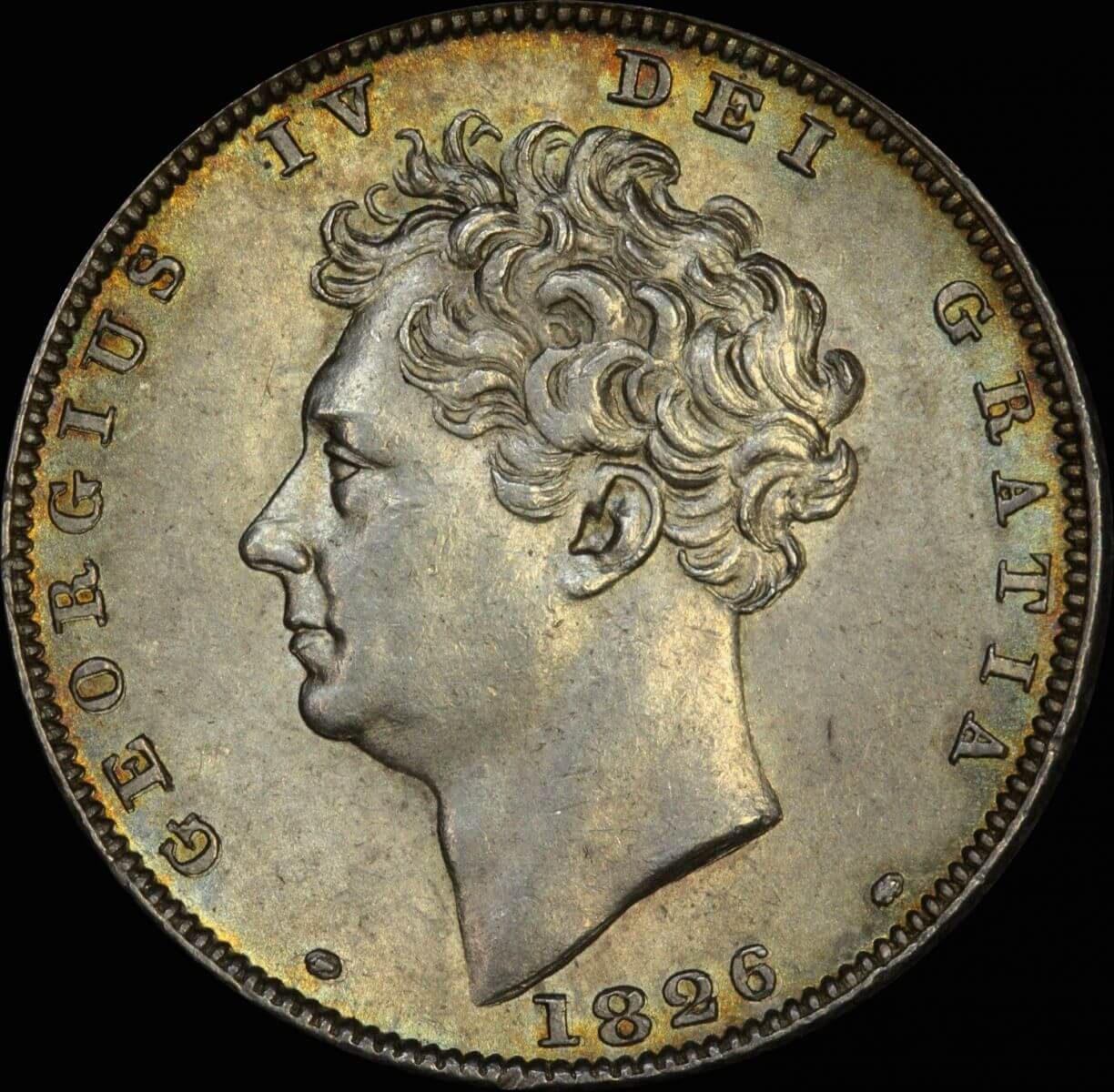
Although foreign coinage and the Holey Dollar and Dump circulated with much success in NSW, thirty thousand pounds in British silver coin arrived in New South Wales in December 1825. Local merchants and traders preferred the stability of British coinage, and Sterling became the accepted medium of exchange in NSW. The definitive legislation that ended the usage of non-British coinage in Australia was enacted on 15 August 1829. It stated that the Spanish dollar was no longer accepted as legal tender by the colonial government.
1849 ~ 1881: Unofficial Copper & Bronze Tokens
Although Sterling coinage was introduced to Australia in a systematic manner from 1825, many local merchants still experienced a great shortage of low denomination coins that could be used for small transactions on a daily basis. This was particularly the case following the discovery of gold in 1851.
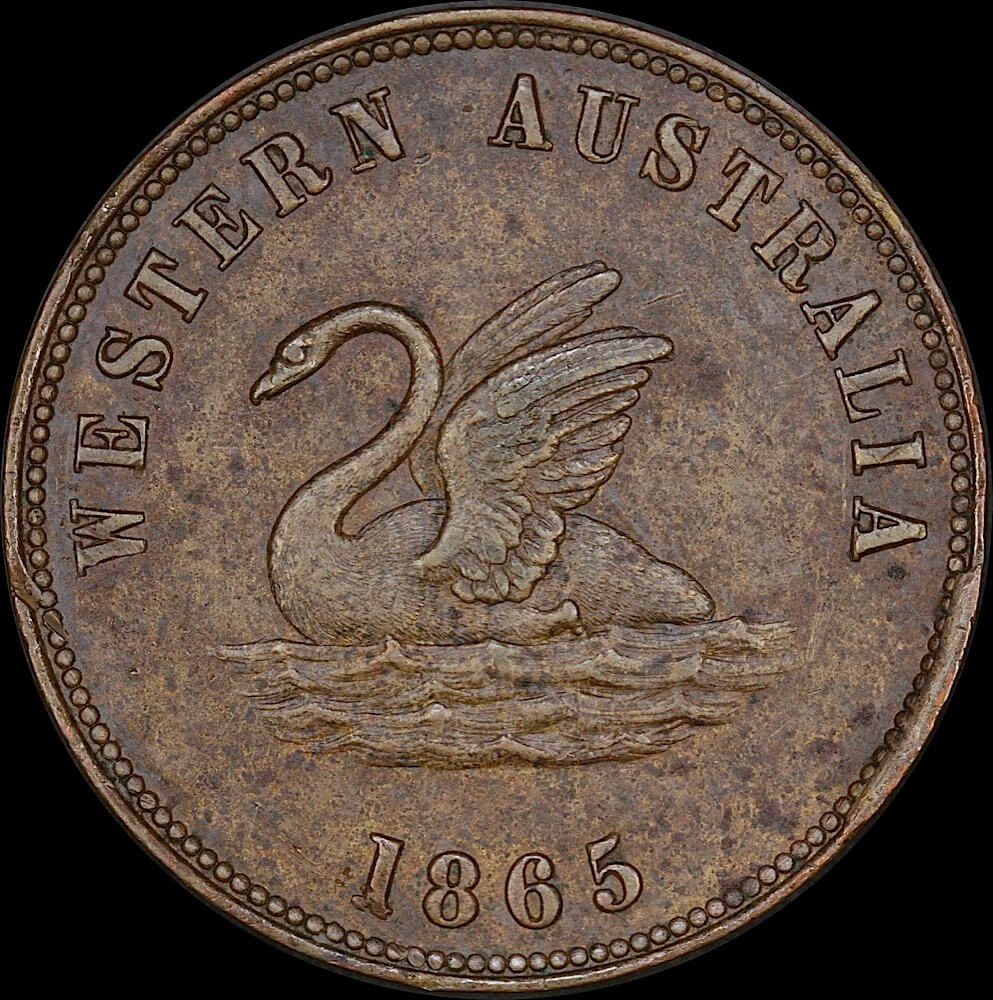
Individual merchants and tradesmen began to distribute their own copper tokens to customers from 1849 onwards. Often of the same purity and weight as English copper coinage, these tokens performed all the ordinary functions of the official coinage, despite being issued by grocers; general stores; drapers; pawnbrokers and haberdasheries (among others). If true collecting is the accumulation of interesting objects that allow the collector to explore history in an affordable manner, the Australian token series certainly fits the bill. Nearly all tradesman’s tokens are heavily worn and therefore relatively common, while the rarest and finest known examples command tens of thousands of dollars.
A collection of Australian tokens from the mid to late 1800’s can show the type of retailers that predominated in those days; it emphasizes the regions that were important to the Australian economy and provide a tangible link to a businessman making his way in the world close to 150 years ago. The background of one of the last merchants to issue tokens, the Fremantle pawnbroker Alfred Davies, is illustrative: Davies was born some time between 1811 and 1813, and arrived at Fremantle on the “Quebec Trader” on April 19th, 1834. Davies apparently married twice, and had many children. Davies first occupation was as a “cooper” in Fremantle, his later employment record shows him to be registered as a “tidewaiter”.
Fremantle Town records show that between 1849 and 1869, Alfred Davies built extensive real estate holdings along some of Fremantle’s main streets. Davies qualified as a juror (with £1,000 of real estate) in 1860, and operated a pawnbroking business between 1870 and 1874. It was the business operated from a building on High Street that Davies issued his tokens. Fremantle Town records also show that Davies later developed a semi-rural property named “Springfield Farm” with his sons; the location of this property is as yet unknown. His death was recorded in Fremantle on March 13th, 1875.
1852 ~ 1931: Australia’s Gold Coinage
For many of us in the 21st century, it is incredible to think that a substance as rare, valuable and beautiful as solid gold could be used in everyday trade. It is difficult for many to conceive that even a small number of gold sovereigns could have ever been considered to be among the most treasured possessions an Australian family could have.
Gold sovereigns today are still passed down through Australian families whose forebears earned them by the sweat of their brow; are still traded daily in their thousands by bullion dealers around the globe; with the finest and rarest examples being prized by collectors.
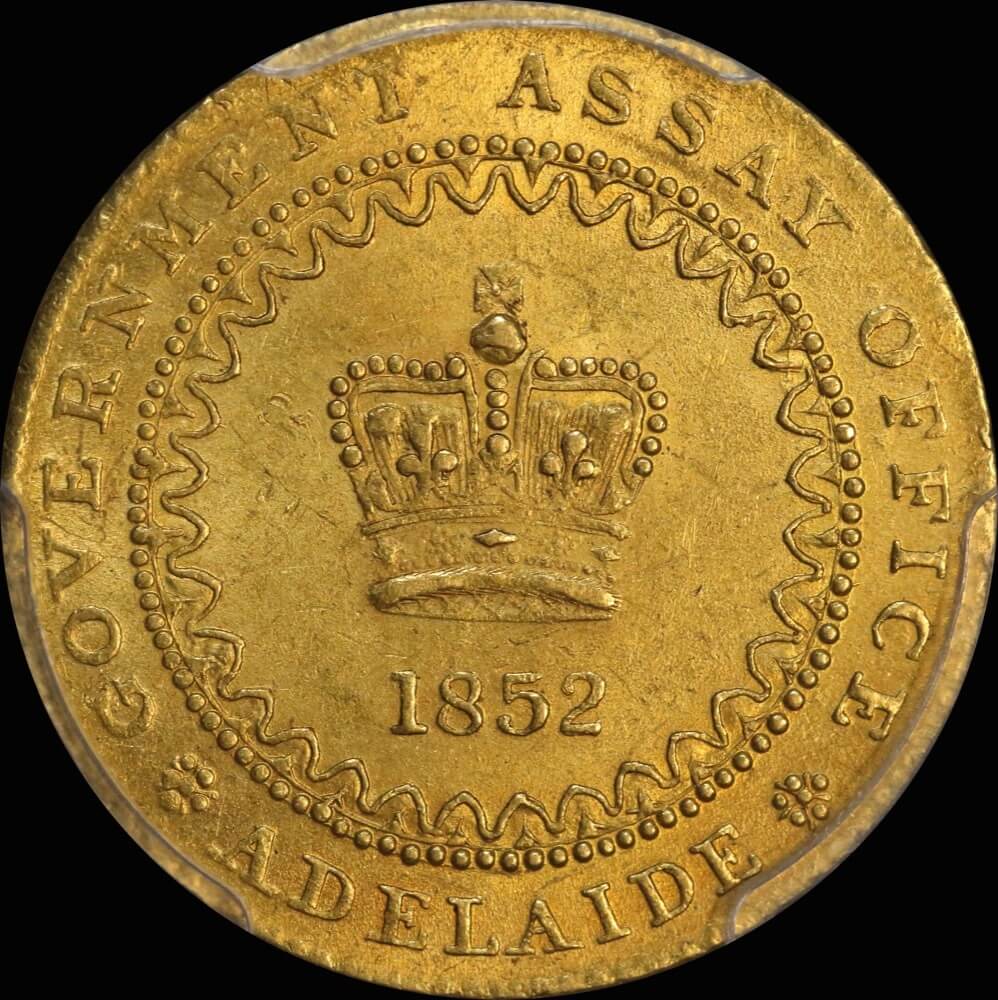
A milestone in the development of our country from British colony to independent nation, Australia’s first gold coins embody much of the social and economic change our country underwent after the gold rushes of the 1850’s. Just as Australia’s unique landscape & isolation; the Great Depression and our participation in World War I have helped shape our national character, the discovery of gold in 1851 had considerable bearing on our culture and economy. Australia produced sovereigns until the end of the gold standard monetary system in 1931 – not only at the Sydney Mint, but also at the branch mints of Melbourne and Perth.
The 1852 Adelaide Pound is Australia’s first gold coin, minted in response to problems caused by the discovery of gold at Mount Alexander (Victoria) in November 1851. It is also one of Australia’s rarest and most coveted coins, and is seldom seen on the collector market. The story surrounding its conception, production and withdrawal has several threads that have been shown to have enduring appeal – the perseverance and foresight of George Tinline; the leadership of Sir Henry Young; the ingenuity of the Assay Office staff and the enterprise of all those that flocked to the goldfields are all stories that strike a chord with Australians in the 21st century.
A definitive description of the woeful state of the South Australian economy following the discovery of gold is a time “when public and private credit were menaced by imminent and immediate peril – when every man amongst us, however flourishing his previous circumstances and however ample his resources, was threatened with impoverishment, if not with utter ruin – when the honest trader was driven to his wit’s end for the means of meeting his engagements – when general panic and dismay pervaded all classes throughout the colonyiii.”
Matters did not improve until some South Australians began to return to Adelaide in early January 1852, bringing with them some £50,000 worth of gold. Owing to the scarcity of coinage, merchants and bankers were forced to accept gold nuggets and dust in payment for goods. It did not take them long to petition the colonial government to intervene and establish a mint, an action that would be in direct conflict with the Royal prerogative to issue coinage. Sir Henry Young could only do so legally if a way through the legislation governing the colony could be found. Instructions to governors of British colonies on the matter of currency were very clear – they were “prohibited assenting in her majesty’s name to any bill affecting the currency of the colonyiv,” and it was this point that prevented Young from allowing a mint to be established. Fortunately, a proviso to this directive was included, and stated, “...unless urgent necessity exists requiring that such be brought into immediate operationv.”
The Adelaide Assay Office began by refining individual deposits of gold into unique ingots and due to problems caused by the ingot’s lack of uniformity, the Assay Office began to introduce “Adelaide Pounds”, essentially gold tokens. In his speech to the South Australian Legislative Council in July 1853, Lieutenant Governor Sir Henry Young stated, “the scheme surpassed the expectations of the most sanguine, and completely vindicated the prudence and sagacity of its promoters.”
The Adelaide Ingots and Pounds remain to this day as solid testament to Australian ingenuity during a period of social and economic turmoil. Very few collectors ever enjoy the opportunity of owning either an Adelaide Ingot or Pound, and it is hardly surprising that they are keenly sought by collectors the nation over.
Bibliography / Footnotes
i Thomas Muir to a friend, 13 December 1794, Historical Records of NSW, II, p. 870.
ii S. J. Butlin, Foundations of the Australian Monetary System (1788–1951), Melbourne University Press, Melbourne,
1953, p143.
iii Thomas Gill, Coinage and Currency of South Australia, Adelaide: Vardon & Sons, 1912, p50.
iv Tom Hanley and Bill James, Collecting Australian Coins, Sydney: Kenmure Press, 1967, p46
v Tom Hanley and Bill James, Collecting Australian Coins, Sydney: Kenmure Press, 1967, p46